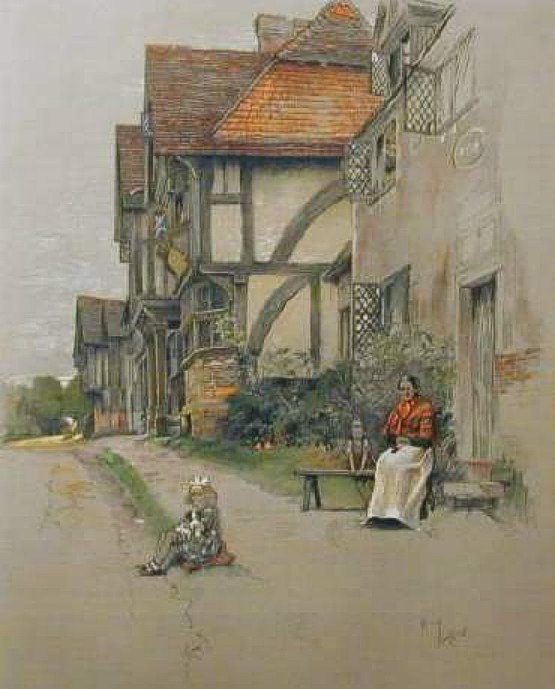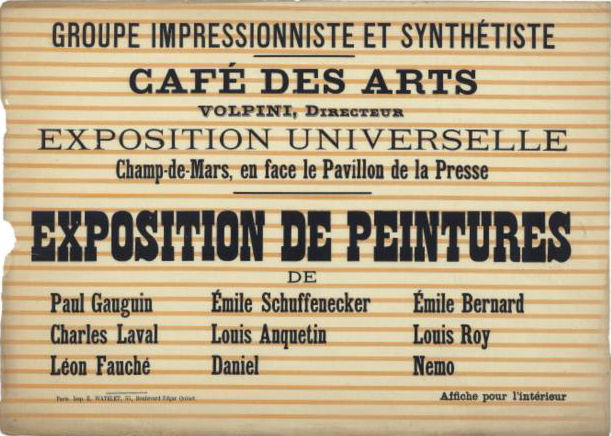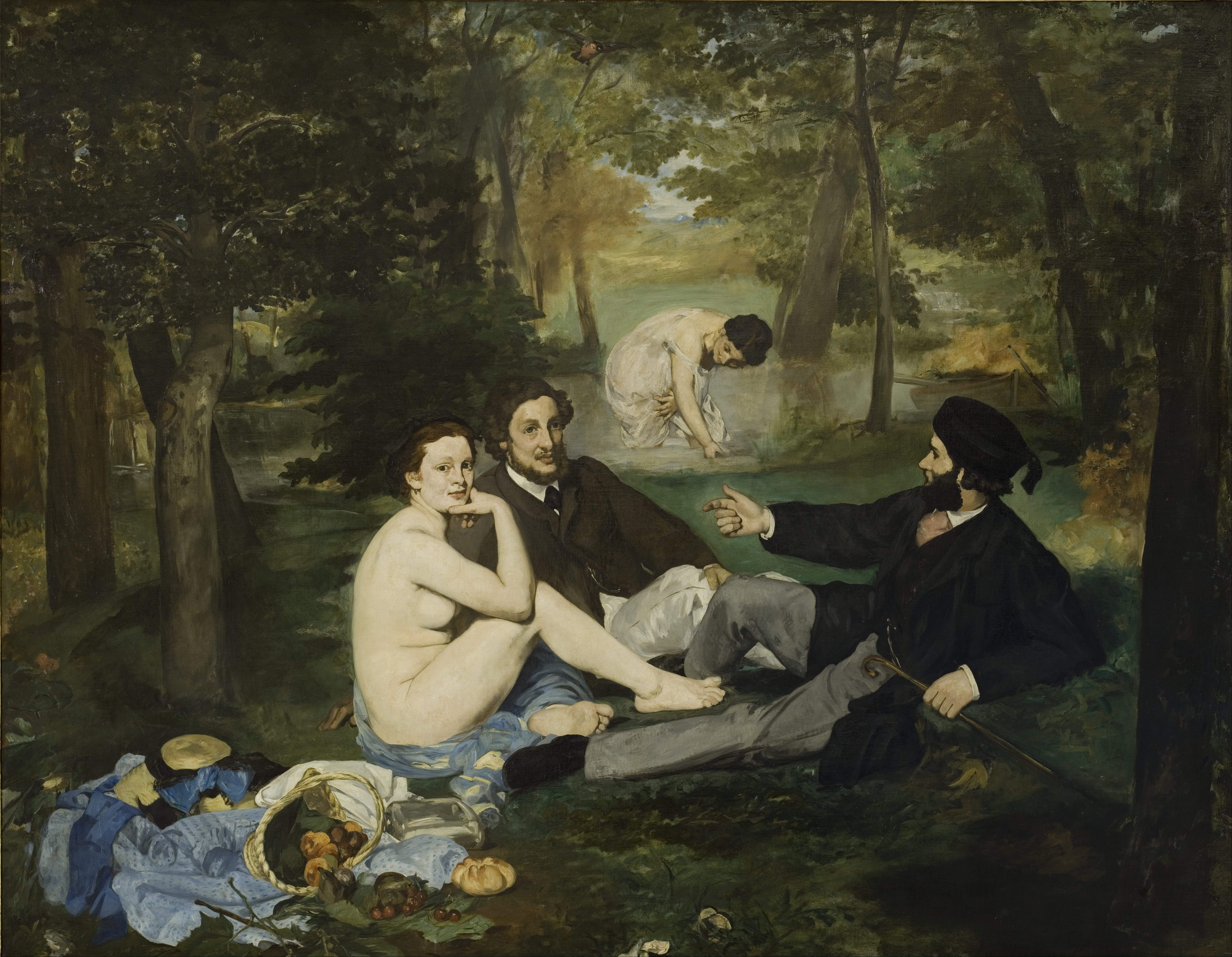|
Umberto Boccioni
Umberto Boccioni (; ; 19 October 1882 – 17 August 1916) was an influential Italian painter and sculptor. He helped shape the revolutionary aesthetic of the Futurism movement as one of its principal figures. Despite his short life, his approach to the dynamism of form and the deconstruction of solid mass guided artists long after his death. His works are held by many public art museums, and in 1988 the Metropolitan Museum of Art in New York City organized a major retrospective of 100 pieces. Biography Umberto Boccioni was born on 19 October 1882 in Reggio Calabria. His father was a minor government employee, originally from the Romagna region in the north, and his job included frequent reassignments throughout Italy. The family soon relocated further north, and Umberto and his older sister Amelia grew up in Forlì (Emilia-Romagna), Genoa and finally Padua. At the age of 15, in 1897, Umberto and his father moved to Catania, Sicily, where he would finish school. Some time after 189 ... [...More Info...] [...Related Items...] OR: [Wikipedia] [Google] [Baidu] |
Reggio Calabria
Reggio di Calabria (; ), commonly and officially referred to as Reggio Calabria, or simply Reggio by its inhabitants, is the List of cities in Italy, largest city in Calabria as well as the seat of the Metropolitan City of Reggio Calabria. As of 2025, it has 168,572 inhabitants and is the List of cities in Italy, twenty-first most populous city in Italy, after Modena and other Italian cities, and the List of metropolitan areas in Europe, 100th most populated city in Europe. Reggio Calabria is located near the center of the Mediterranean and is known for its climate, ethnic and cultural diversity. It is the third economic centre of mainland Southern Italy. About 511,935 people live in its metropolitan city.Reggio is located on the "toe" of the Italian Peninsula and is separated from the island of Sicily by the Strait of Messina. It is situated on the slopes of the Aspromonte, a long, craggy mountain range that runs up through the centre of the region. As a major functional pole ... [...More Info...] [...Related Items...] OR: [Wikipedia] [Google] [Baidu] |
Liberty Style
Liberty style ( ) was the Italian variant of Art Nouveau, which flourished between about 1890 and 1914. It was also sometimes known as ("floral style"), ("new art"), or ("modern style" not to be confused with the Spanish variant of Art Nouveau which is Art Nouveau in Madrid). It took its name from Arthur Lasenby Liberty and the store he founded in 1874 in London, Liberty Department Store, which specialized in importing ornaments, textiles and art objects from Japan and the Far East. Major Italian designers using the style included Ernesto Basile, Ettore De Maria Bergler, Vittorio Ducrot, Carlo Bugatti, Raimondo D'Aronco, Eugenio Quarti, and Galileo Chini. Liberty style was especially popular in large cities outside of Rome (the capital) which were eager to establish a distinct cultural identity, particularly Milan, Palermo and Turin, the city where the first major exposition of the style in Italy was held in 1902. This marked a major event and featured works of both It ... [...More Info...] [...Related Items...] OR: [Wikipedia] [Google] [Baidu] |
Cecil Aldin
Cecil Charles Windsor Aldin (28 April 1870 – 6 January 1935), was a British artist and illustrator best known for his paintings and sketches of animals, sports, and rural life. Aldin executed village scenes and rural buildings in chalk, pencil and also wash sketching. He was an enthusiastic sportsman and a Master of Fox Hounds, and many of his pictures illustrated hunting. Aldin's early influences included Randolph Caldecott and John Leech. Early life and career Born in Slough, Aldin was educated at Eastbourne College and Solihull Grammar School. Cecil Aldin's father, a builder, was a keen amateur artist so Cecil started drawing at a very young age. He studied art at the studio of Albert Joseph Moore in Kensington but, unhappy with the teaching methods Aldin left after a month to study animal anatomy at the National Art Training School in South Kensington. After this he attended a summer school run by the animal painter and teacher, William Frank Calderon at Midhurst, Sus ... [...More Info...] [...Related Items...] OR: [Wikipedia] [Google] [Baidu] |
Milan
Milan ( , , ; ) is a city in northern Italy, regional capital of Lombardy, the largest city in Italy by urban area and the List of cities in Italy, second-most-populous city proper in Italy after Rome. The city proper has a population of nearly 1.4 million, while its Metropolitan City of Milan, metropolitan city has 3.2 million residents. Within Europe, Milan is the fourth-most-populous List of urban areas in the European Union, urban area of the EU with 6.17 million inhabitants. According to national sources, the population within the wider Milan metropolitan area (also known as Greater Milan) is estimated between 7.5 million and 8.2 million, making it by far the List of metropolitan areas of Italy, largest metropolitan area in Italy and List of metropolitan areas in Europe, one of the largest in the EU.* * * * Milan is the economic capital of Italy, one of the economic capitals of Europe and a global centre for business, fashion and finance. Milan is reco ... [...More Info...] [...Related Items...] OR: [Wikipedia] [Google] [Baidu] |
Accademia Di Belle Arti Di Venezia
The (English: Academy of Fine Arts of Venice) is a public tertiary academy of art in Venice, Italy. History The Accademia di Belle Arti di Venezia was founded on 24 September 1750; the statute dates from 1756. The first director was Giovanni Battista Piazzetta; Gianbattista Tiepolo became the first president after his return from Würzburg. The academy was at first housed in a room on the upper floor of the , a flour warehouse and market on the Grand Canal, close to Piazza San Marco. The space was insufficient, and students and teachers had to contend with the noise and dust of the market, which also occupied the first floor of the building. Antonio Canova studied at the academy in the 1770s. In 1807, the academy was re-founded by Napoleonic decree. The name was changed from Veneta Academia di Pittura, Scultura e Architettura to Accademia Reale di Belle Arti, "royal academy of fine arts", and the academy was moved to premises in the Palladian complex of the Scuola della ... [...More Info...] [...Related Items...] OR: [Wikipedia] [Google] [Baidu] |
Post-Impressionist
Post-Impressionism (also spelled Postimpressionism) was a predominantly French art movement that developed roughly between 1886 and 1905, from the last Impressionist exhibition to the birth of Fauvism. Post-Impressionism emerged as a reaction against Impressionists' concern for the naturalistic depiction of light and colour. Its broad emphasis on abstract qualities or symbolic content means Post-Impressionism encompasses Les Nabis, Neo-Impressionism, Symbolism, Cloisonnism, the Pont-Aven School, and Synthetism, along with some later Impressionists' work. The movement's principal artists were Paul Cézanne (known as the father of Post-Impressionism), Paul Gauguin, Vincent van Gogh and Georges Seurat. The term Post-Impressionism was first used by art critic Roger Fry in 1906.Peter Morrin, Judith Zilczer, William C. Agee, ''The Advent of Modernism. Post-Impressionism and North American Art, 1900-1918'', High Museum of Art, 1986 Critic Frank Rutter in a review of the Salon ... [...More Info...] [...Related Items...] OR: [Wikipedia] [Google] [Baidu] |
Impressionist
Impressionism was a 19th-century art movement characterized by visible brush strokes, open Composition (visual arts), composition, emphasis on accurate depiction of light in its changing qualities (often accentuating the effects of the passage of time), ordinary subject matter, unusual visual angles, and inclusion of movement as a crucial element of human perception and experience. Impressionism originated with a group of Paris-based artists whose independent exhibitions brought them to prominence during the 1870s and 1880s. The Impressionists faced harsh opposition from the conventional art community in France. The name of the style derives from the title of a Claude Monet work, ''Impression, soleil levant'' (''Impression, Sunrise''), which provoked the critic Louis Leroy to coin the term in a Satire, satirical 1874 review of the First Impressionist Exhibition published in the Parisian newspaper ''Le Charivari''. The development of Impressionism in the visual arts was soon foll ... [...More Info...] [...Related Items...] OR: [Wikipedia] [Google] [Baidu] |
Umberto Boccioni - Self-portrait, Oil On Canvas, 1905, Metropolitan Museum Of Art
Umberto is a masculine Italian given name. It is the Italian form of Humbert. People with the name include: * King Umberto I of Italy (1844–1900) * King Umberto II of Italy (1904–1983) * Prince Umberto, Count of Salemi (1889–1918) * Umberto I, Count of Savoy (980 – 1047 or 1048) * Umberto II, Count of Savoy (1065–1103) * Umberto III, Count of Savoy (1135–1189) * Umberto Bassignani (1878–1944), Italian sculptor * Umberto Boccioni (1882–1916), Italian artist and sculptor * Umberto Calzolari (1938–2018), Italian baseball player * Umberto Cassuto (1883–1951), Italian historian and rabbi * Umberto Colombo (1927–2006), Italian scientist * Umberto De Morpurgo (1896–1961), Italian tennis player * Umberto Eco (1932–2016), Italian writer * Umberto Giordano (1867–1948), Italian composer * Umberto Meoli (1920–2002), Italian economic historian * Umberto Merlin (1885–1964), Italian lawyer and politician * Umberto Nobile (1885–1978), Italian pilot and explorer ... [...More Info...] [...Related Items...] OR: [Wikipedia] [Google] [Baidu] |
Chromoluminarism
Divisionism, also called chromoluminarism, is the characteristic style in Neo-Impressionist painting defined by the separation of colors into individual dots or patches that interact optically..Homer, William I. ''Seurat and the Science of Painting.'' Cambridge, MA: The MIT Press, 1964. By requiring the viewer to combine the colors optically instead of physically mixing pigments, Divisionists believed that they were achieving the maximum luminosity scientifically possible. Georges Seurat founded the style around 1884 as chromoluminarism, drawing from his understanding of the scientific theories of Michel Eugène Chevreul, Ogden Rood and Charles Blanc, among others. Divisionism developed along with another style, Pointillism, which is defined specifically by the use of dots of paint and does not necessarily focus on the separation of colors.Ratliff, Floyd. ''Paul Signac and Color in Neo-Impressionism.'' New York: Rockefeller UP, 1992. . Theoretical foundations and development ... [...More Info...] [...Related Items...] OR: [Wikipedia] [Google] [Baidu] |
Giacomo Balla
Giacomo Balla (18 July 1871 – 1 March 1958) was an Italian painter, art teacher and poet best known as a key proponent of Futurism. In his paintings, he depicted light, movement and speed. He was concerned with expressing movement in his works, but unlike other leading futurists he was not interested in machines or violence with his works tending towards the witty and whimsical. Biography Giacomo Balla was born in Turin, in the Piedmont region of Italy, on 18 July 1871. He was the son of Giovanni Balla, a chemist with an interest in photography, and Lucia Balla. His father died in 1878, after which Balla went to work in a lithography shop to help support his mother. By age 20, his interest in visual art had developed to such a level that he decided to study painting at local academies, and several of his early works were shown at exhibitions. Following academic studies at the University of Turin, Balla moved to Rome in 1895, where he met and later married Elisa Marcucci. For ... [...More Info...] [...Related Items...] OR: [Wikipedia] [Google] [Baidu] |
Nietzsche
Friedrich Wilhelm Nietzsche (15 October 1844 – 25 August 1900) was a German philosopher. He began his career as a classical philologist, turning to philosophy early in his academic career. In 1869, aged 24, Nietzsche became the youngest professor to hold the Chair of Classical Philology at the University of Basel. Plagued by health problems for most of his life, he resigned from the university in 1879, and in the following decade he completed much of his core writing. In 1889, aged 44, he suffered a collapse and thereafter a complete loss of his mental faculties, with paralysis and vascular dementia. He lived his remaining years under the care of his family until his death. His works and his philosophy have fostered not only extensive scholarship but also much popular interest. Nietzsche's work encompasses philosophical polemics, poetry, cultural criticism and fiction, while displaying a fondness for aphorisms and irony. Prominent elements of his philosophy include his r ... [...More Info...] [...Related Items...] OR: [Wikipedia] [Google] [Baidu] |






